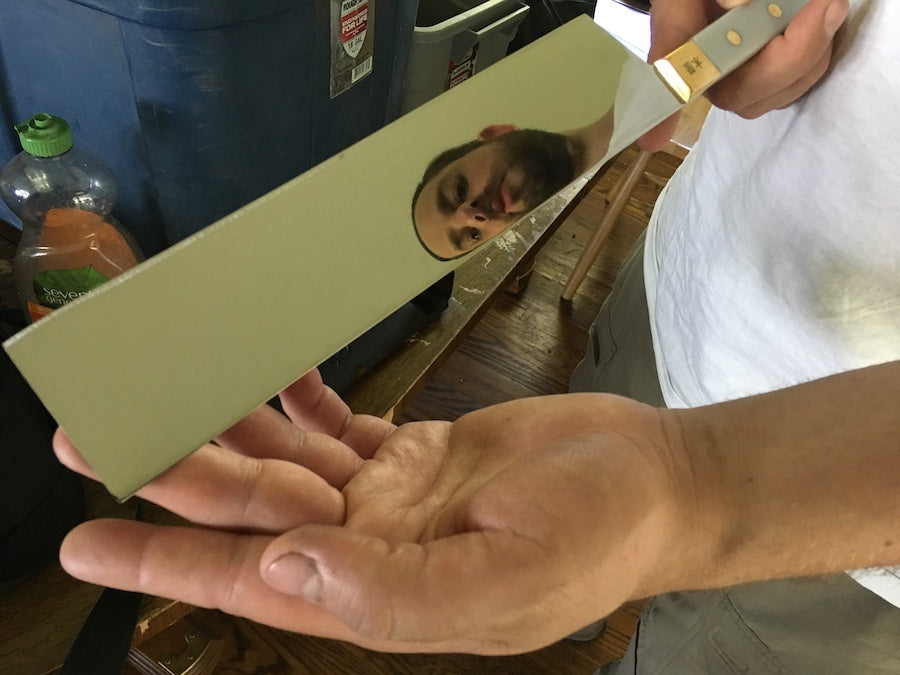The shechita knife—often referred to as a chalif (chalef/chalof) or sakin—is a specially designed, custom-made tool. Its unique design, maintenance, and use help the shochet avoid performing one of the hamisha poslei shechita (the five disqualifying acts). If you’re not yet familiar with these, you’ll want to read our post on them before continuing with this article.
Knife Design
A kosher slaughter knife must be at least twice the length of the animal’s neck. This ensures the shochet has enough space to make a smooth sawing motion, rather than chopping down on the neck, which would disqualify the cut through drasah (pressing). Following this tradition, we label every knife in our shop according to the animal it is best suited for.
Additionally, each knife is squared at the end to prevent stabbing into the animal’s neck (ḥaladah). Pictured below are our Beginner’s Poultry Knife and Professional Shechita Knives for poultry, sheep, and cattle.
Sharpening and Maintenance
Unlike most knives, kosher slaughter knives rarely come with a finished edge. Instead, the shochet must set the edge by hand. This ensures the blade is ultra-sharp and customized to the shochet’s preferred angle. For that reason, all of our knives are sold with either a basic machine edge or no edge at all, requiring hand-sharpening before use. Shochtim are expected to put the edges on their own knives, and anyone without sufficient training should seek proper shechita instruction from an experienced teacher before attempting this.
The initial edge, as well as ongoing maintenance, is created using a progression of wet sharpening stones: typically a ~250 grit stone, a 1000 grit stone, a 6000–8000 grit polishing stone, and often one or two natural finishing stones. Complete sets—including flattening and cleaning stones—are available in our shop.
Alongside sharpening, shechita knives must be checked frequently for absolute smoothness. This prevents tearing of the neck, which would disqualify the slaughter through ikkur (tearing). After sharpening and between animals, shochtim test their blades by carefully running a fingernail across the edge to detect nicks or roughness. This is a delicate and potentially dangerous process that should only be undertaken with proper training.
Purchasing a Shechita Knife
If you’re buying a chalif for the first time, we recommend starting with our Beginner’s Shechita Knife for practice. Once you’ve mastered sharpening, you can upgrade to one of our Professional Shechita Knives. Finding kosher slaughter knives in the United States used to be difficult, but today you can source just about any style you need directly through our shop.







